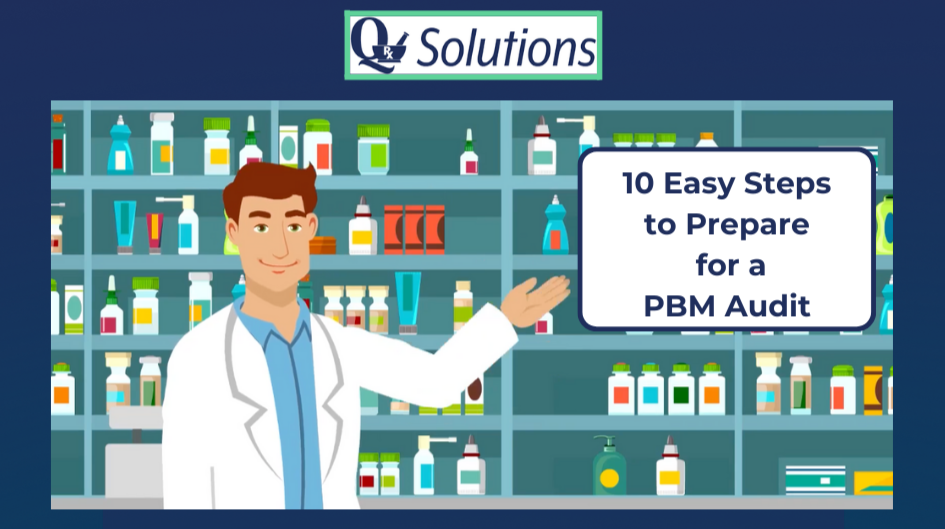The tension begins when you receive a notification of an upcoming audit. Whether it is an onsite or desk audit they can be stressful. But there are some easy steps to take to ease the stress and allow you to focus on the items that could stand out to an auditor. When it comes to audits, the most effective strategy to minimize risk is to Document, Document, Document. PBMs require hard copies for adjustments in quantities, for plan requirements, patient requests, or clarifications from the prescriber. Every change or override you make in the pharmacy should be explained with written documentation. If you are audited, provide a detailed trail of the prescription history and documentation to provide a complete story of the prescriptions that have been requested. These proactive measures will go a long way to minimize losses from PBM audits. But it requires diligence, vigilance, and a lot of time. By clearly defining your pharmacy processes and protocols to include risk mitigation measures you can reduce the impact of an audit recovery. Below are the ten steps we have put together to assist you when preparing for an upcoming audit.
1. Review PBM provider manual for defined audit procedures – note what an auditor can do while in the pharmacy.
o Check temp in Refrigerator?
o Tour of pharmacy?
o What is included in Scope of audit?
o Audit Pro Tip: Have the manual or copies of relevant pages readily available during the audit for easy reference.
2. Create a file or box in which all audit related correspondence, records, notes and documentation of all related phone calls are stored.
3. Meet with staff to prepare for the audit and ensure they are aware of all audit protocols.
4. Organize and prepare your audit records (use the following as an example):
o Number the pages in Red at the top right corner of the documents to match the listing of the audit document.
• If more than one page, then document each page appropriately (e.g. 1 of 3)
• Make sure the Rx # is on every page/document
5. Conduct a self-audit to identify any potential problems or issues by reviewing pharmacy records for a random sample of claims that fall within the audit window. Audit Pro Tip: Contact QRx and request that they provide you with a report listing all claims adjudicated within the scope of the audit period, and/or a report listing all claims that have been identified as being potentially at risk for audit.
10 Most Common Audit Discrepancies
1. Lack of calculable directions for the prescription
2. Lack of documentation for DAWs
3. Miscalculated days supply
4. Early refill due to a miscalculated days supply
5. Missing patient signature for prescription pickup/delivery logs
6. Failing to collect a minimum monthly amount on patient charge accounts
7. Cutting quantities without documentation as to why the quantity was cut
8. Not documenting rejection override information
9. Missing information on transfer orders
10. Not providing the requested information before the audit due date
6. Audit Pro Tip- Develop a standard checklist that encompasses all of the above elements for use with each audit to ensure that the pharmacy is sufficiently prepared and also to serve as a historical summary document for pharmacy audit records.
7. Gather Prescriber Statements prior to the audit. The Prescriber Statement needs to be comprised of the following:
The address and telephone number of the prescriber should be printed on the prescriber’s own letterhead. Member name, medication(s), date(s) of service, strength, directions, quantity ordered, and refills (if applicable) should be included within the document; and the original method and date of the prescription should also be included within the document The document must bear the prescriber’s signature. Audit Pro Tip: Note that “Call in” or “Phone in” prescriptions are not acceptable during the post audit phase.
8. Gather A Patient Statement prior to the audit. The Patient Statement needs to be comprised of the following:
Member address and telephone number; Medication(s), Rx number(s) and date(s) of service and must bear the member’s signature
9. Copy any additionally requested documents for the auditor – never let them leave with originals.
10. Prepare a designated physical area for the auditor. This should be a private space out of view of employees and pharmacy operations. The only documents in this space should be those relevant to the audit that you have provided for their use.
Knowing what steps your pharmacy can take can save thousands of dollars. Having a partner on your side is even more important and can provide you will peace of mind for your pharmacy. QRx is that partner. We have extensive knowledge and experience when dealing with PBMs. We are able to analyze every third-party claim and identify potential audit triggers.
If you have been audited and received a notification that the PBM is going to be takebacks, QRx pre and post edits services is available to create custom edits to prevent of any future audit exposure audit takeback scenarios. Our team can provide a demo how the edits can assist your pharmacy to being proactive and reduce audit exposure. Give us a call or drop us a line to set up your next step to beating the PBM’s at taking back your hard-earned money.





